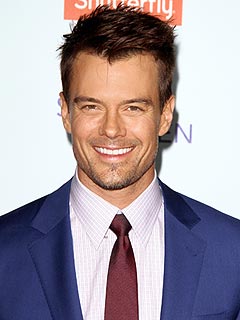BEIRUT (Reuters) - Syrian President Bashar al-Assad's forces seized a village southeast of the city of Aleppo on Friday, reopening a supply line to the country's biggest city where they have been battling rebels for eight months, a monitoring group said.
The Syrian Observatory for Human Rights said the capture of Tel Shghaib marked the last step to creating a land supply route north into Aleppo from Hama province, crucial for Assad's forces who have lost control of part of the main north-south highway.
Rebels say they hold most of the city itself and nearly all the rural hinterland. But they have been unable to achieve a decisive victory and complain that they are outgunned and vulnerable to Assad's air force, artillery and ballistic missiles, which killed dozens of people in Aleppo last week.
The United States pledged direct but non-lethal aid to the rebels at a meeting in Rome on Thursday, disappointing Assad's opponents who had hoped for more tangible military support to tip the balance of forces on the ground.
Activists reported another day of fierce fighting around Aleppo, including the military airport at Nairab, three miles north of Tel Shghaib which Assad's forces retook.
"It's a significant gain for the regime," the British-based Observatory's director Rami Abdelrahman said of the army's push north, which reversed many rebel advances when they moved south into Hama from Aleppo province at the end of last year.
Further east, on the Iraqi frontier, government troops also managed to wrest back control of the Yarubiyah border crossing after insurgents seized it 24 hours earlier, he said.
SYRIA COULD FALL APART
The revolt against Assad, which erupted in March 2011 with mainly peaceful protests, has escalated into civil war between mainly Sunni Muslim forces and troops and militias loyal to Assad, from the minority Alawite community whose faith derives from Shi'ite Islam.
The United Nations says 70,000 people have been killed, nearly a million have fled the country and millions more have been displaced or need aid.
U.N. Secretary-General Ban Ki-moon said on Friday that Syria, a major Arab state on the fault lines of broader Middle East conflict, would fall apart if the government and rebels keep fighting instead of seeking a negotiated peace.
"This is a very small window of opportunity which we strongly support and encourage them to use that. The opportunity may close soon," Ban said in Geneva.
The government and opposition have both edged away in recent weeks from their previous rejection of dialogue. Foreign Minister Walid al-Moualem said on Monday the government would even talk to armed rebels and opposition coalition leader Moaz Alkhatib has said he is ready to meet Assad's representatives.
But Syrian officials say any serious talks must be on Syrian soil under state control, and have shown no readiness to discuss Assad's departure - the central demand of the opposition. For rebel fighters, who do not answer to exiled civilian opposition leaders, Assad's exit is a precondition for any negotiations.
"I continue to urge the Syrian parties to find their way to the negotiating table. The horrors of the last months and years prove beyond doubt: the military solution in Syria is leading to the dissolution of Syria," Ban said.
He also called on the U.N. Security Council, paralyzed by a standoff between the United States and European allies on one side, pushing for U.N. action against Assad, and Russia and China, who have backed Assad, to unite and address the crisis.
Moscow criticized Thursday's meeting in Rome of largely anti-Assad Western and Arab states for taking positions and steps which "directly encourage extremists" to topple the government by force.
But the Kremlin also said presidents Vladimir Putin and Barack Obama had told their foreign ministers to keep in close touch and seek new initiatives to end Syria's civil war.
U.S. Secretary of State John Kerry said on Thursday Washington would provide non-lethal aid including medical supplies and food to rebel fighters, as well as $60 million to help the civilian opposition provide services including security, education and sanitation.
The European Union said it had amended sanctions on Syria to allow the supply of armored vehicles, non-lethal military equipment and technical aid.
The steps still fell well short of what rebels are looking for - more arms, and prompted the opposition to postpone a Saturday meeting where they had been due to choose a prime minister to head the administration of rebel-held territory.
Alkhatib said he was tired of hearing Western concerns over the growing role of Islamists in the Syrian rebel ranks - one of the main obstacles to greater military support, saying it paled into insignificance alongside the prolonged civilian suffering.
"Many sides...focus (more) on the length of the rebel fighter's beard than they do on the blood of the children being killed," he said, standing next to Kerry after their meeting.
(Additional reporting by Stephanie Nebehay in Geneva and Alissa de Carbonnel in Moscow; Editing by Mark Heinrich)










